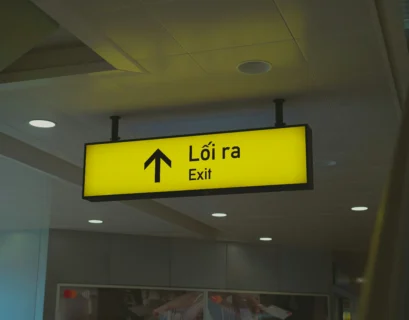Wondering whether to fly or take a ferry to Ibiza? The short answer: flying is usually faster, while ferries can be more comfortable and flexible especially if you’re bringing a vehicle, extra luggage, or you’d rather avoid flying. The best choice depends on your budget, schedule, baggage, and where you’re starting your trip. For a quick side-by-side, jump to the at‑a‑glance comparison or see what you can bring in baggage and allowances.
Below is a clear, side-by-side look at prices, travel time, and what you can bring, plus practical tips for booking from the United States or Europe.

At a glance: ferry vs flight
| Factor | Flight to Ibiza (IBZ) | Ferry to Ibiza (from Barcelona) |
|---|---|---|
| Typical price (one-way) | Varies widely; US travelers can often save $200–$800 by booking a separate US–BCN/MAD roundtrip + separate BCN/MAD–IBZ ticket (book 2–4 weeks ahead; Ibiza Spotlight forum) | $87.46–$495.88; average for a foot passenger around $137.57 (Direct Ferries). Vehicle and cabin choices increase cost. |
| Travel time | Fast in the air, but US flights typically involve layovers to reach IBZ. | About 8h 30m from Barcelona to Ibiza (Direct Ferries). Overnight sailings available on some routes. |
| Baggage | Airline-dependent; checked bags and large carry-ons often cost extra. | Spacious; easy to bring more luggage, bicycles, and pets. Vehicles welcome on many routes (Ferryhopper, Direct Ferries). |
| Comfort | Quick hop once you’re in Spain; limited space on board. | Room to move, fresh air decks, optional private cabins on some sailings. |
| Best for | Maximizing time in Ibiza; tight schedules. | Avoiding flying, traveling with lots of gear, bringing a car, slower travel. |
Costs: how to compare real-world prices
If you’re flying
- US strategy to save: Book a separate roundtrip to Barcelona (BCN) or Madrid (MAD), then a separate roundtrip to Ibiza (IBZ). Travelers report savings of $200–$800, especially when the Spain domestic leg is booked 2–4 weeks in advance (Ibiza Spotlight forum).
- Watch add-ons: Checked bags, large carry-ons, seat selection, and priority boarding can add up particularly on low-cost carriers.
- Transfers: Factor in airport transfers and possible overnight stays if layovers are long.
If you’re taking a ferry
- Fare range: From Barcelona to Ibiza, published prices span roughly $87.46–$495.88 depending on operator, season, seating/cabin choice, and whether you bring a vehicle. A typical foot-passenger fare averages about $137.57 (Direct Ferries).
- What affects price: Summer weekends, private cabins, fast ferries, and car length/height can push fares higher.
- Hidden costs to check: Port transfers, onboard meals, and pet or bicycle fees if applicable.
Time and convenience
- Flights: The quickest way to get there once you’re in Spain, but US-origin trips usually involve one or more layovers. Build in buffer time for connections and airport formalities.
- Ferries: The Barcelona–Ibiza crossing is about 8h 30m. Overnight options mean you can sleep en route and arrive refreshed. Boarding is more relaxed than flying, and you can move around freely on deck.
- Door-to-door reality: Consider travel time to airports or ports, security and check-in, boarding, arrival transfers, and the reliability of your connection between segments. See the booking checklist to compare like-for-like.
Baggage and what you can bring
Flights
- Allowances vary by airline: Always check size/weight limits. Many budget carriers charge for anything beyond a small personal item.
- Sports gear and instruments: Often treated as special items with fees and advance notice.
Ferries
- More room, fewer restrictions: Ferries typically allow generous luggage, plus bicycles and pets. Many routes allow you to take your car or campervan (Ferryhopper, Direct Ferries).
- Cabins and seating: Choose from standard seats to private cabins on some ships great for night crossings or families.

Who should fly vs who should ferry
Choose a flight if you:
- Value the fastest arrival once in Spain.
- Have a short vacation and want to maximize time on the island.
- Travel light and can avoid baggage fees.
Choose a ferry if you:
- Prefer a calmer journey or have a fear of flying.
- Are bringing a vehicle, bulky gear, a bike, or a pet.
- Like overnight travel with a cabin to save on hotel nights.
US traveler playbook: two common routes
- Fly all the way: Book US → (Europe) → IBZ on one ticket for simplicity. It’s the fastest end-to-end option but may cost more.
- Split tickets for savings: Book US ↔ BCN/MAD as one roundtrip, then BCN/MAD ↔ IBZ as a separate roundtrip. This can save $200–$800 if timed right (Ibiza Spotlight forum). Allow ample buffer between flights since separate tickets don’t protect misconnects.
- Fly + ferry combo: Fly to Barcelona, enjoy the city, then take the ~8h 30m ferry to Ibiza. Consider an overnight sailing with a cabin to arrive rested (Direct Ferries).
Booking checklist
- Price out both options for your dates: flight-only vs flight+ferry vs split-ticket flights.
- Compare total door-to-door time, not just in-air or at-sea time.
- Include all extras: baggage, seat/cabin upgrades, transfers, meals, pet/vehicle fees.
- For split tickets, build generous connection buffers and consider travel insurance.
- If seasickness is a concern, choose a larger vessel, a cabin, and pack remedies.
- Traveling peak season? Book early fares and cabins sell out quickly.
FAQs
How much can US travelers expect to save using split tickets via Barcelona?
Reports commonly cite $200–$800 in savings by booking US ↔ BCN/MAD on one ticket and BCN/MAD ↔ IBZ on a separate roundtrip (Ibiza Spotlight forum). Savings are most likely when you buy the Spain domestic leg 2–4 weeks ahead and avoid peak weekends. Always compare the combined price (plus bag fees) against a single through-ticket for the same dates. Factor the cost of longer layovers or an overnight if needed.
What are the total door-to-door time differences between flying and ferrying to Ibiza?
From Barcelona, flying typically takes about 3.5–5 hours door-to-door: 60–75 minutes in the air plus transit to the airport, 90–120 minutes for check-in/security, and arrival time for baggage and transfers. The ferry is usually ~9.5–10.5 hours door-to-door: 45–60 minutes check-in/boarding, 8h 30m sailing, and 15–30 minutes to disembark. Overnight ferries can double as your “hotel night,” effectively trading time in transit for rest. Your origin city, traffic, and season can shift these ranges.
Which ferry amenities reduce seasickness and improve overnight crossing comfort?
Choose a larger, conventional ferry over a fast catamaran, and book a midship cabin where motion is lowest. A private cabin (ideally with a window) plus earplugs, an eye mask, and hydration can make overnight crossings restful. If you’re motion-sensitive, take remedies before boarding and spend time on deck for fresh air. Picking a calmer weather window also helps.
How should I factor vehicle and pet fees into ferry versus flight costs?
Flights won’t carry your car, so you’d need to rent on arrival; ferries charge by vehicle type, length, and height, which can significantly increase the fare. Add pet fees for a kennel or pet-friendly cabin on ferries, and compare with airline pet charges and restrictions per segment. Build a total cost line-up: base fare + baggage + seat/cabin + vehicle + pet + transfers + meals. This makes the flight vs ferry decision apples-to-apples.
What minimum connection buffer should I allow when using separate flight tickets?
As a rule of thumb, allow at least 4 hours for separate tickets at the same airport so you can reclaim/recheck bags and clear security again. Bump that to 6 hours or more if changing terminals, switching alliances, or clearing immigration. If the last flight of the day is involved or if airports differ consider an overnight buffer. Separate tickets aren’t protected, so err on the side of extra time.
Bottom line
Fly if you want the fastest arrival and a simple itinerary. Take the ferry if you value space, comfort, and the ability to bring more especially vehicles, bikes, or pets. From the US, consider the split-ticket strategy via Barcelona or Madrid for potential savings of $200–$800, and weigh that against the ferry’s ~8h 30m crossing, cabin comfort, and generous baggage options. Compare total cost and door-to-door time for your dates, then book the combo that fits your trip style.













